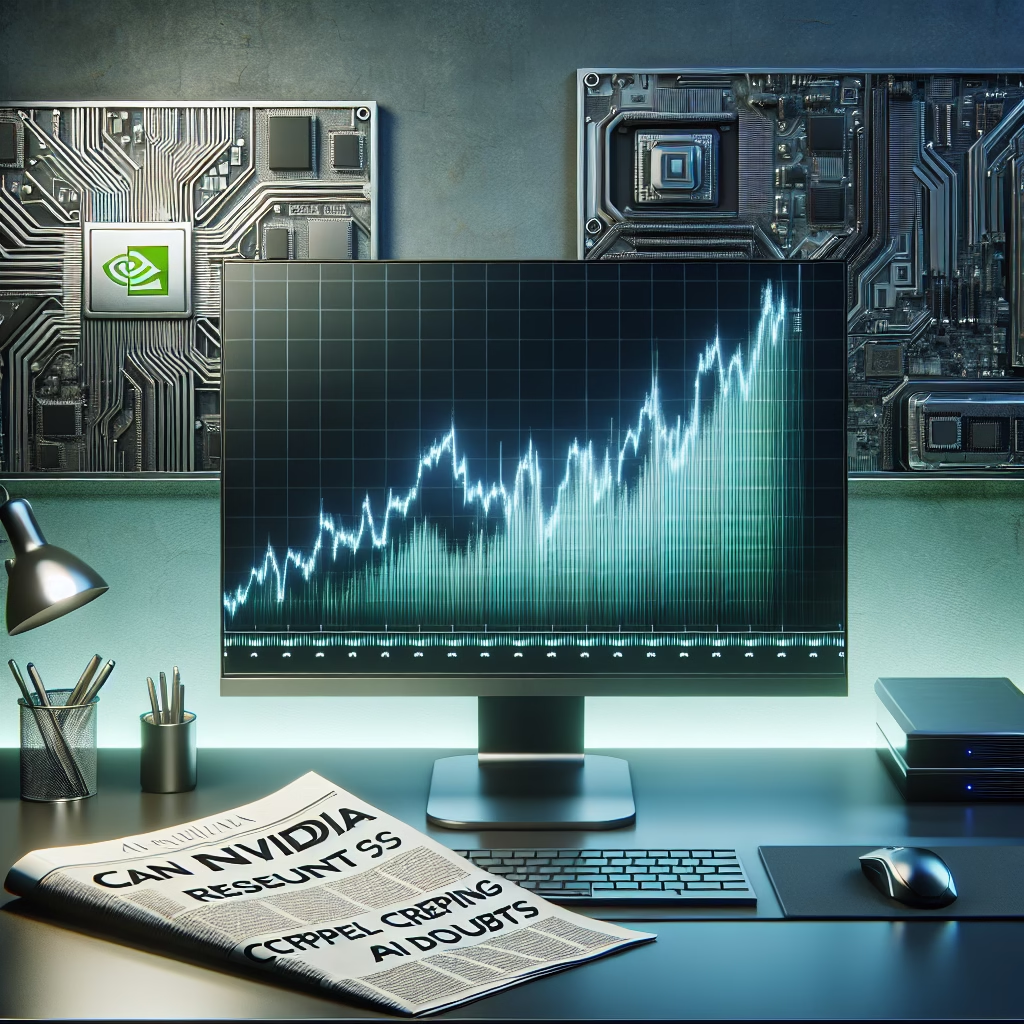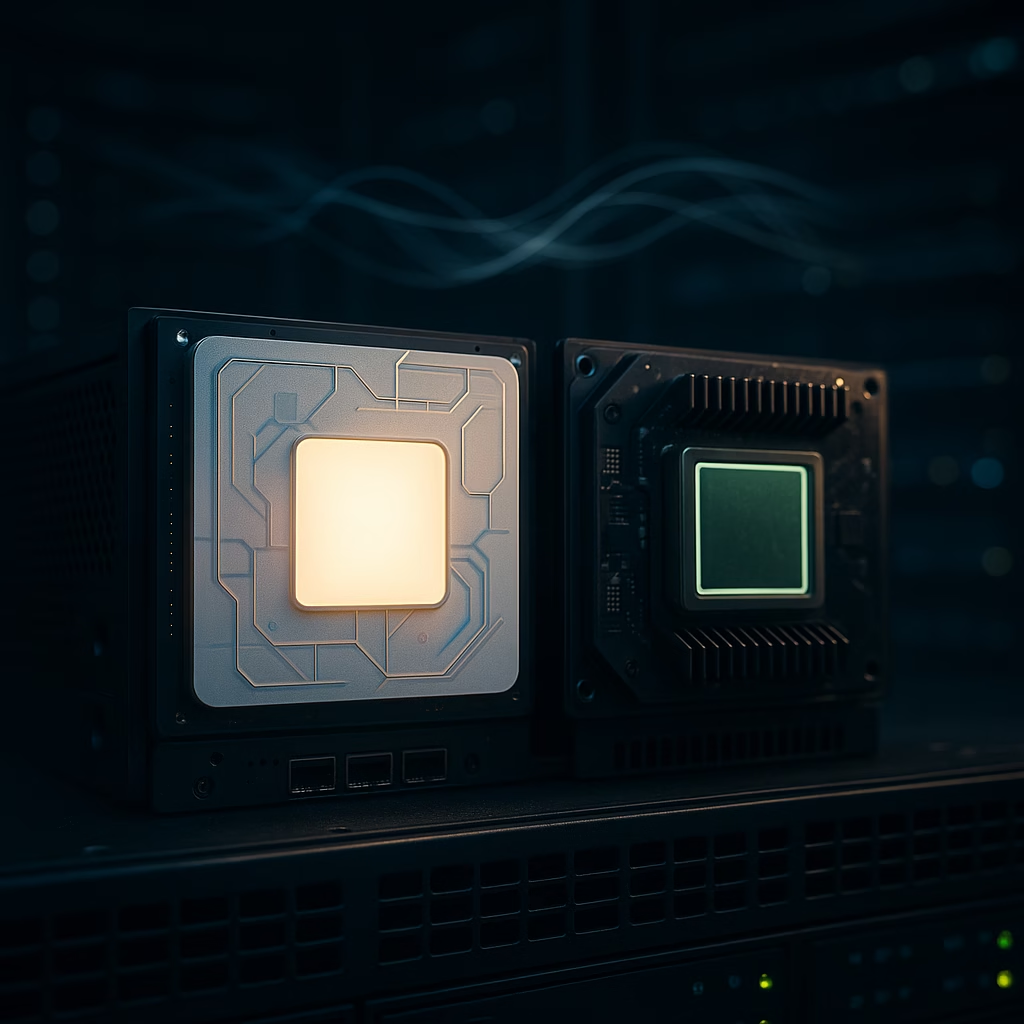Can Nvidia Results Dispel Creeping AI Doubts?
In the midst of growing market skepticism about the long-term viability of the artificial intelligence (AI) boom, all eyes are turning to Nvidia—Silicon Valley’s powerhouse and AI mega-enabler. As Nvidia prepares to unveil its latest quarterly earnings, investors are hoping for reassurance that the AI revolution is more than just a passing trend. But can one company’s performance inject renewed confidence into a market brimming with uncertainty?
The High-Stakes Stage for Nvidia
Nvidia is no stranger to the spotlight. As the dominant supplier of GPUs (Graphics Processing Units) used in AI training and inference, the company has become the poster child for AI-driven growth. Over the last year, Nvidia’s stock has surged dramatically, fueled by an exploding demand for advanced computing capabilities from companies building and deploying AI systems.
Key points driving investor interest include:
- Massive demand for Nvidia’s H100 chips, a favored component for AI data centers worldwide.
- Explosive earnings in recent quarters, reflecting aggressive AI infrastructure investment, especially from cloud giants like Microsoft, Amazon, and Google.
- Strategic partnerships and ecosystem expansion bolstering Nvidia’s reach across sectors such as healthcare, automotive, and enterprise.
Despite Nvidia’s dominance, there are growing whispers about whether the AI frenzy that propelled the tech space in recent years can sustain its momentum. Many on Wall Street are beginning to wonder where the next leg of growth will come from, particularly as some real-world applications of AI remain both nascent and difficult to monetize.
Why The Market Is Getting Nervous
The AI sector’s recent meteoric rise has prompted serious reflection: Is this growth exponential and sustainable, or is the hype outpacing substance?
1. Valuation Concerns
Nvidia’s stock trades at lofty valuation metrics, pushing the boundaries of what’s considered normal even in the high-risk tech sector. These high multiples require continued aggressive revenue and earnings growth, something that can be difficult to maintain long-term.
2. Shifting Demand Dynamics
While cloud giants continue to invest billions in generative AI infrastructure, questions are emerging about the pace of deployment for real-world AI applications. Some enterprises are adopting a wait-and-see approach due to costs, regulatory hurdles, and unclear ROI from emerging AI tools.
3. Competitive Threats
The landscape isn’t static. AMD, Intel, and a variety of custom silicon startups are ramping up production of AI-optimized chips. While Nvidia holds the upper hand today, a narrowing margin or a shift in vendor preference could significantly change the game in the months ahead.
What Wall Street Expects
Nvidia’s upcoming earnings report is expected to be another blockbuster, bolstered by continued AI infrastructure spend. Analysts project:
- Revenue expectations exceeding $28 billion, more than triple compared to the same period last year.
- Earnings per share (EPS) to substantially outpace estimates, showcasing Nvidia’s ability to monetize the ongoing AI explosion.
Investors are watching more than just headline numbers. Forward guidance, supply chain commentary, and management’s tone on AI-driven growth will be pivotal.
Key Metrics to Watch:
- Data center revenue: The biggest driver of growth, particularly related to large-scale AI training models.
- Gross margins: A higher margin may indicate strong pricing power on chips like the H100.
- Growth from emerging sectors: Contributions from industries outside of core tech, such as automotive or energy.
A Crucial Litmus Test for the AI Economy
Nvidia’s earnings are seen by many as a proxy for the overall AI economy. If the company can meet or beat expectations, it may serve to quell the rising market doubts. A solid report would likely trigger a wave of optimism and assert the argument that AI is not merely a passing craze, but a deep technology shift with structural tailwinds.
But a miss—or even lukewarm forward guidance—could lead to broader implications. Tech stocks that have ridden the AI wave could experience significant volatility, and there could be growing calls to reassess just how impactful and immediate AI returns will be.
Broader Implications for the AI Ecosystem
Although Nvidia is the star of the AI stage, what it reports will affect the entire ensemble of companies riding this trend. AI startups, data center infrastructure players, cloud service providers, and downstream application developers are all watching closely.
If Nvidia Exceeds Expectations:
- Renewed investor confidence in AI tech companies—particularly chipmakers, cloud vendors, and AI software platforms.
- Acceleration of AI adoption across vertical industries including healthcare, media, and logistics.
- Wall Street analysts may revise growth projections upward, reinforcing bullish long-term views on AI’s impact.
If Nvidia Falls Short:
- Skepticism may turn defensive, leading to selloffs among overvalued or underperforming AI-related equities.
- Tech sector valuations could face renewed scrutiny amid fears that near-term earnings are overstretched.
- Shift in narrative—focus could shift toward slower, incremental AI deployment rather than revolutionary transformations.
Final Thoughts: Confidence in Context
As we approach Nvidia’s next earnings announcement, it’s clear that the stakes go beyond just one company’s financials. Nvidia has become a bellwether for artificial intelligence as a sector, a movement, and an economic force. Whether it can dispel creeping AI doubts will largely depend on its ability to deliver—and convince—on multiple fronts.
For now, the market remains cautiously optimistic. But with valuations high and expectations even higher, there’s little room for disappointment.
All eyes are on Jensen Huang and Nvidia to prove that the AI boom isn’t just real—it’s just beginning.
< lang="en">







Leave a Reply